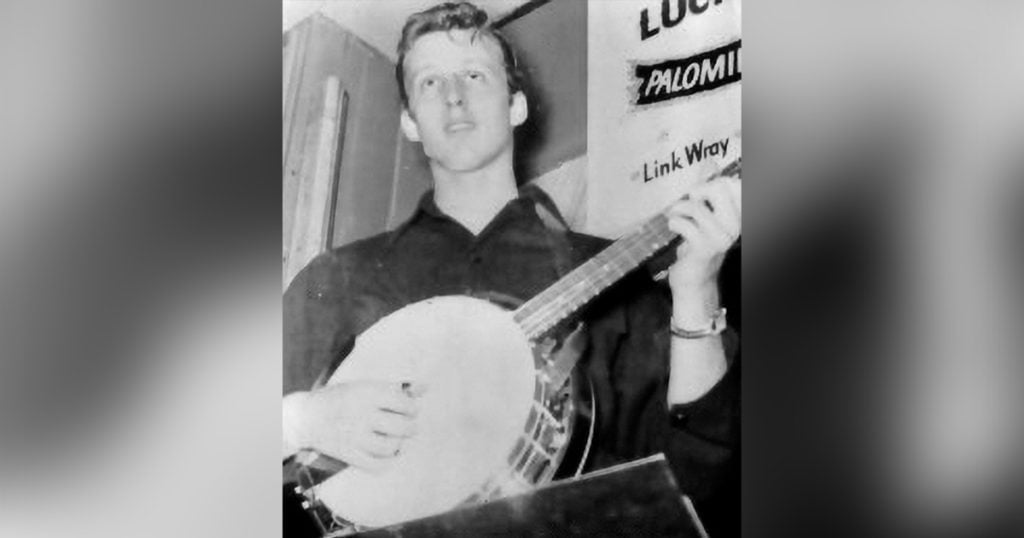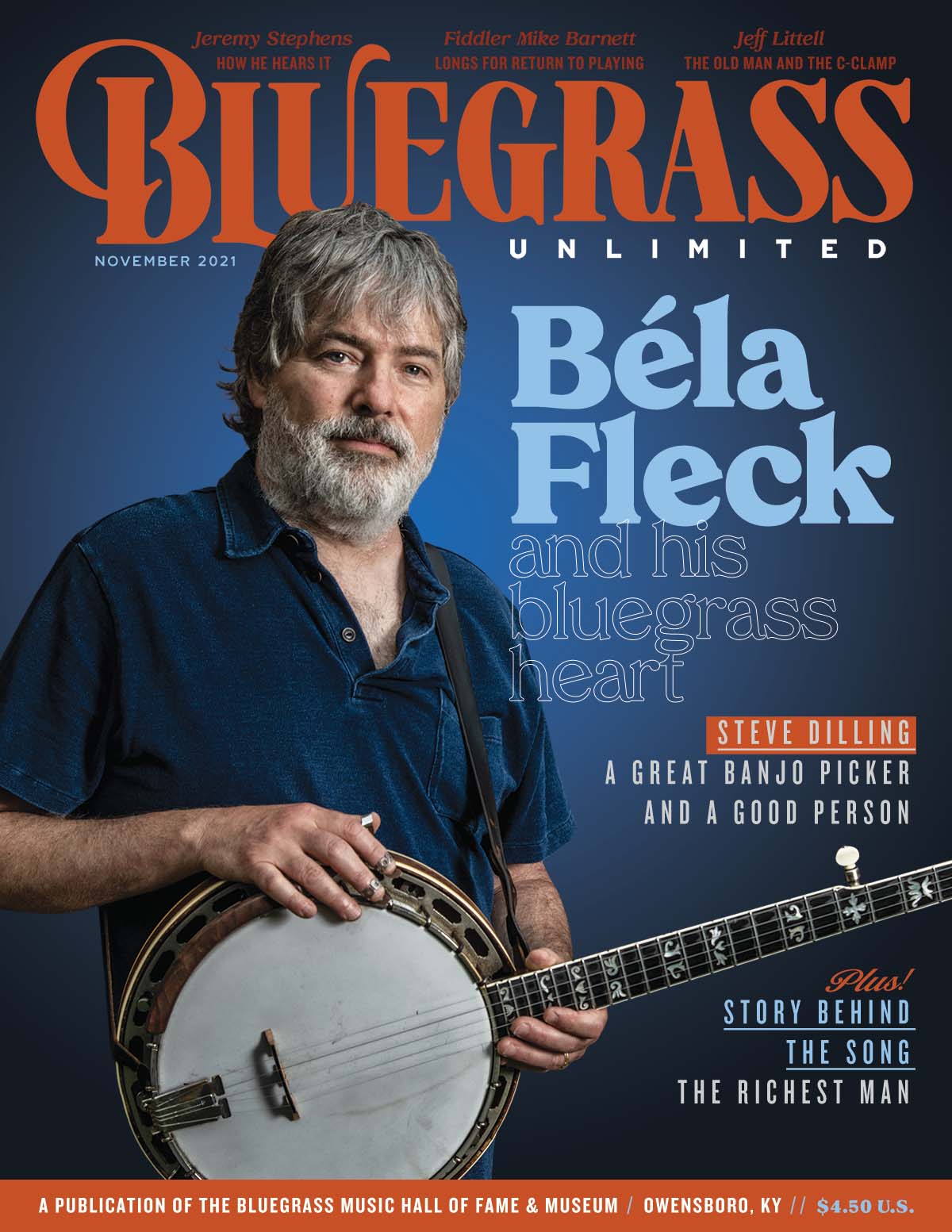Home > Articles > Special Series > Bill Emerson — The Early Years
Bill Emerson — The Early Years

William Hundley “Bill” Emerson, Jr. was born in Washington, D.C. on January 22nd, 1938. He was raised in Bethesda, Maryland. His father, William Hundley Emerson, Sr. (1898-1963) was married to the former Texas native Netty Louise Price (1911-1997) and owned a Buick dealership on 17th and M Street in Washington, D.C. called Emerson & Orme. The dealership had been in the family since 1915.
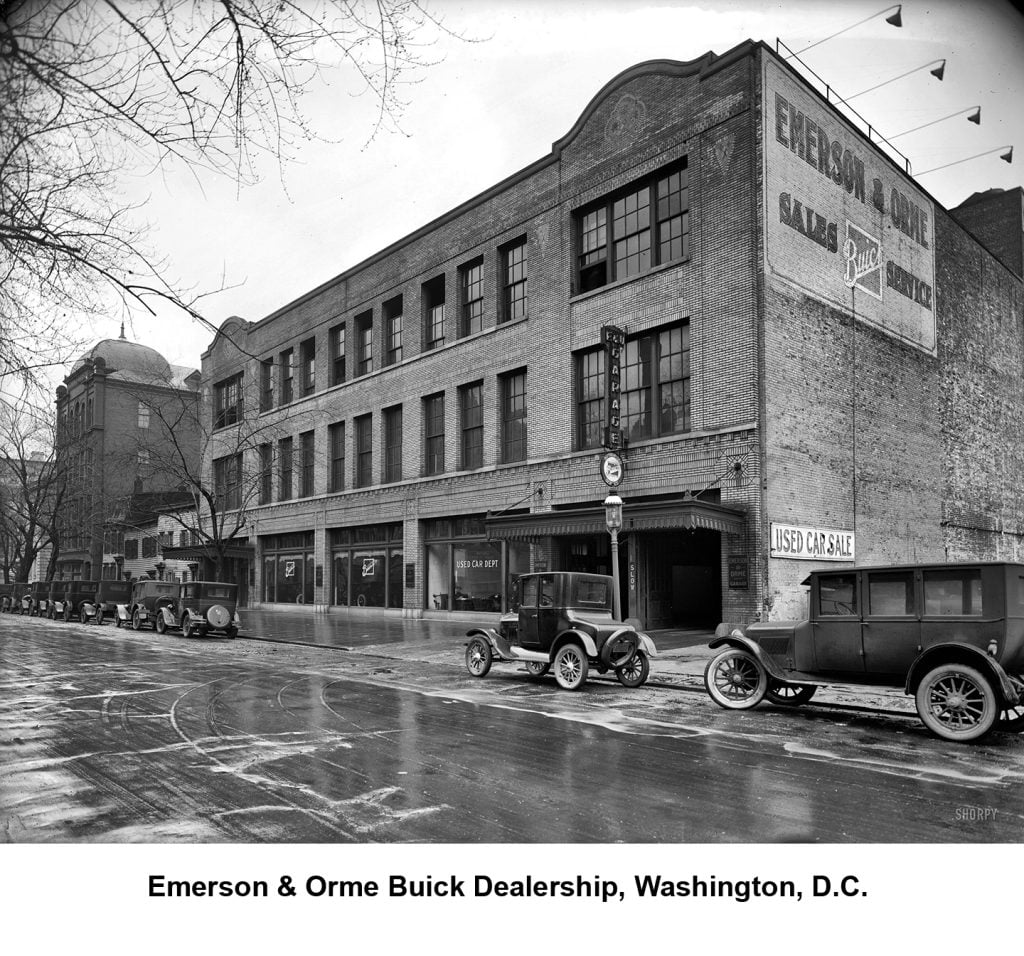
A respected businessman, William Emerson, Sr. spent time as a board member of Maryland National Bank and at one time was the President of the Washington Area New Automobile Dealer’s Association (established in 1917). Bill Jr. had a half-sister, Charlotte, from his mother’s previous marriage and a twin brother, Robert Edward Emerson (1938-2011). Although Bill’s brother Bob was never a musician, the two brothers were close and shared a passion for guns, fishing, cars, airplanes, trains and knives.
Bill’s grandparents were William Register Emerson (1850-1920) and Florence Hundley Emerson (1877-1907). William Register Emerson’s brother was the famous inventor Victor Lee Emerson (1863-1941). Born in Denton, Maryland, Victor later lived in Philadelphia and was known as “The Philadelphia Edison.” Victor specialized in the automotive field and was the inventor of the universal joint, the bevel-gear drive (which eliminated chain drives), the unit power plant, the cantilever spring, and forced-feed lubrication (Harrisburg Evening News, 6 May 1941).
Before Bill learned how to play the banjo, at about the age of fourteen, he learned how to play a little music on the ukulele and for Christmas—about a year before discovering the banjo—he was given a National f-hole electric jazz guitar. He was interested in learning to play country music on the guitar and specifically mentioned liking the music of Hank Snow. About a year after he got the guitar, a neighbor from South Africa, Mike Horrocks, played Bill some old 78 recording of Bill Monroe and Flatt & Scruggs. The first tune he heard that included a banjo was on Bill Monroe’s “Uncle Pen.” In an interview conducted for the Bluegrass Hall of Fame and Museum Oral Histories Project, Bill recalls hearing the banjo for the first time and saying “What is that? I’ve got to try and play that!”
After his first exposure to recorded bluegrass music, Bill took his guitar and amp to a pawn shop and traded it for a cheap Belltone banjo. This would have been in about 1953 (he later traded the Belltone for a Gibson RB-100). Once he got the Belltone in his hands, Bill put the banjo across the handlebars of his bicycle and pedaled down Goldsboro Road to John Duffey’s house, about two miles away. Bill had never actually seen anyone play the banjo and didn’t know anything about it. He felt that Duffey could at least show him how to get started.
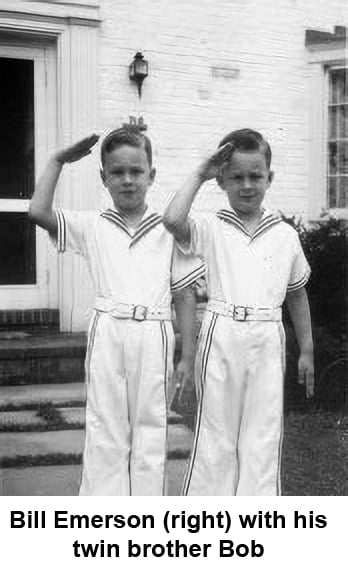
Emerson and Duffey had attended the same high school, although Duffey was four years older. Bill had met Duffey at a Hot Shoppes drive in restaurant on Wisconsin Avenue in Bethesda, Maryland. He described the Hot Shoppes as a local hang out for high school kids. Duffey would back his car into a parking spot at the drive in and sit on the hood playing his mandolin. Duffey showed Bill how to put the banjo picks on his fingers and how to play a few chords and execute banjo rolls. John also taught Bill the theory of harmony singing and taught him how to sing the baritone part. From there Bill was off and running on his own. One of the first songs that he learned how to play was “I’m Using my Bible for a Roadmap.”
The first live bluegrass Bill witnessed was Duffey playing with Bill Blackburn on banjo and an un-named guitar player. The trio was jamming at the Old Dominion Speedway in Manassas, Virginia. Bill Emerson’s son, Mike, shared this recollection from an email exchange with Bill, “In those days anyone could enter the drag races at Old Dominion Speedway in Manassas. There was a class for stock V8 Chevys, Fords, Olds, etc. When I met John he owned a stock 1950 Olds 88, which was a pretty hot car in those days. Duffey, Blackburn and others used to jam in the pits for nobody in particular. . . not on a stage for the race audience. Bill Blackburn was the first human being I ever saw play a 5-string banjo.”
Bill Emerson has also stated in various interviews that an early local influence on his banjo playing was Smitty Irvin. Smitty—originally from Shelby, North Carolina—played on Jimmy Dean’s television show with a group called Buck, Smitty, and the Virginians. In the oral histories interview, Bill said that he had “bugged Smitty Irvin to death to get him to show me stuff.” Bill also learned by watching Don Stover play with Buzz Busby on a television show—titled Hayloft Hoedown—on WRC-TV in Washington D.C. that started in September of 1954 and ran for about six months. The television show was popular and did a lot to help promote bluegrass music in the Washington, D.C. area.
After playing the banjo for only three months Bill won the banjo contest at Luke Gordon’s Silver Creek Ranch (near Paris, Virginia). In a 1992 interview, Bill told Bluegrass Unlimited Magazine, “I don’t know why I won, but I did. I played ‘Lonesome Pine Breakdown,’ one of the first tunes that I could handle. I practiced every time I could get my hands on the banjo. I’d play all day and night if I could.”
In about 1955, at the age of seventeen, Bill got a job performing on a morning radio show on WINX in Rockville, Maryland with Uncle Bob and the Blueridge Partners. Uncle Bob was not a musician, but was the show’s emcee. The band members were Kenny Haley on guitar, Jimmy Green on second guitar, Bill Emerson on banjo, Willard Barnes on mandolin, and Bill Offenbacker on bass. The band would also play for area country dances. This was Bill’s first paying job.
Regarding the job with Uncle Bob, Bill told Bluegrass Unlimited Magazine (March 1992), “The leader was Bob Smith. They had a radio program on WINX in Rockville, Md., about 8 o’clock on Saturday morning. I went there one day to see them and there were about ten of them with guitars, mandolins and fiddles. They didn’t have a banjo player and invited me to join the fun. They were playing local Moose lodges on Saturday nights and I got my feet wet hanging around with them.”
Emerson’s first night club gig was playing with Roy and Curly Irvin—Smitty Irvin’s brother and father, respectively. Curly played the bass and Roy played the guitar. Art Wooten, who had played fiddle with Bill Monroe in 1939 and 1941, with the Stanley Brothers in 1948 and 1952, and had recorded four songs with Flatt and Scruggs, played fiddle with the group. The band played at small clubs, like the Pine Tavern, in Washington, D.C. An article about Emerson in the April, 1968 edition of Bluegrass Unlimited reported that Bill found Art Wooten’s “musicianship and knowledge of early fiddle tunes to be a source of constant inspiration.”
Evidently, Emerson was not shy about taking his banjo to shows and clubs to see if he could learn something. Mike Emerson recalls a story his father told him about playing with rock and roll guitar legend Link Wray (listed number 45 on Rolling Stone magazine’s top 100 rock and roll guitar players). Prior to the birth of rock and roll, the North Carolina native Wray was playing in a country band with his brothers in Washington, D.C. Wray had moved to D.C. after leaving the service in 1955. Wray’s country band, called Link Wray and the Lazy Pine Ramblers (later called the Palomino Ranch Hands) included his brothers Vernon and Doug, and Shorty Horton on bass. The band was playing at a club called The Rendezvous and Bill Emerson, who had just got his driver’s license, took his banjo down to the club. Wray heard about Bill having a banjo with him and invited him to sit in with the band. Bill ended up sitting in with the band on numerous occasions.
Bill’s determination to have a career in bluegrass music also led a “cold call” audition for the father of bluegrass, Bill Monroe. In an email to his son, Mike, Bill said, “When I had been playing the banjo (on the radio) for about a year, I went to Nashville, Tennessee to ask Bill Monroe for a job. He was very nice, gave me an audition and took me to the Grand Ole Opry that night. Bill said that he ‘needed someone with more experience.’ I didn’t get the job, but he told me ‘you’ve got a good right hand, keep working at it, you’ll make a good Banjo Man.’ Mike later visited his dad and asked for more details. Mike added, “Dad told me that he drove his black 1951 Mercury 4-door sedan all the way from the Emerson family home on Goldsboro Road in Bethesda, MD, to the Nashville, for the express purpose of seeing Bill Monroe. Dad said he had heard that Monroe always got a room at the Clarkston Hotel when he played the Grand Ole Opry, so when he arrived, he got the room number from the clerk and made his way up to Monroe’s room [he couldn’t remember which floor his room was on]. He knocked on the door and introduced himself, when Monroe opened the door, saying something like, ‘I’d like to audition for a job playing banjo with you and your band.’ Dad couldn’t remember the songs he played, but he said that Monroe really treated him very well, considering Dad was only about seventeen years old and he had just made a ‘cold-call’ knock on Monroe’s hotel room door!”
In 1956 Bill joined Buzz Busby and the Bayou Boys at WTOV in Salisbury, Maryland, taking Don Stover’s banjo spot. Bill considered this his first serious professional gig. Buzz Busby was born Bernarr Graham Busbice in 1933 in Eros, Louisiana. He came from a musical family and started playing the guitar at the age of eight and the mandolin at the age of fourteen. After graduating from high school, Busby was offered a job at the FBI and moved to Washington, D.C. where he soon began playing music with Scotty Stoneman and Jack Clement. Clement soon left and Scotty and Buzz went to work for Mac Wiseman late in 1952. By 1954 they had moved on to form a group with Pete Pike and Donnie Bryant. That group secured a radio show on WGAY in Silver Spring, Maryland. Later that year they entered the National Country Music Championship competition in Warrenton, Virginia. Exposure at this competition led to the creation of the television show on WRC-TV.
In 1955 Buzz left Washington, D.C. and moved to Shreveport, Louisiana to play on the Louisiana Hayride. Charlie Waller was one of the musicians that played with Buzz in Louisiana. In 1956, Buzz returned to the Washington, D.C. area. This is when Bill Emerson joined the band. Speaking of Buzz in the oral histories interview, Bill said, “Buzz was a great musician with an innovative style and unique abilities. Buzz was not an imitator. He loved Monroe, but he had his own style. He was a good songwriter and showman.” Working with Buzz, Emerson learned that it was good to be innovative and develop your own style.
In the spring of 1957, Buzz Busby and the band went into Ben Adelman’s recording studio and cut “Lonesome Wind” and “Lost.” The musicians on these sessions included Buzz Busy on mandolin, Bill Emerson on banjo, Pete Pike on guitar, Vance Trull* on bass, and Scotty Stoneman on fiddle. These were the first studio recordings of Bill Emerson playing the banjo.
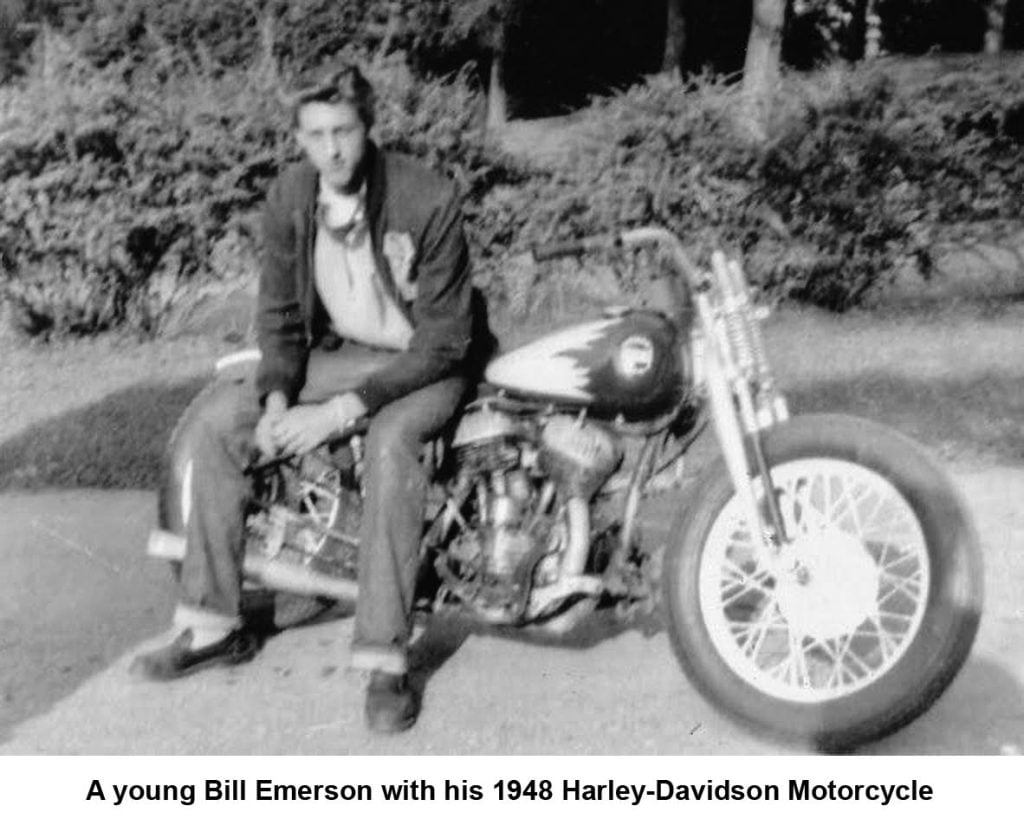
On June 29th, 1957 Buzz Busby and the Bayou Boys—Buzz on mandolin, Eddie Adcock on guitar, Vance Trull on bass, and Bill Emerson on banjo—finished a gig at the Admiral Grill in Bailey’s Crossroads, Virginia and the band, minus Bill, decided to drive to North Beach, Maryland to visit some all-night clubs. Bill opted to go home after the gig and not accompany the other band members. Buzz Busby’s good friend Sonny Presley was driving the car. In the early morning hours, as the group was returning home, Presley fell asleep at the wheel and crashed the car into a utility pole. Busby was riding shotgun and Adcock and Trull were in the back seat. The rescue workers thought that Busby was dead, but the doctors at the hospital were able to revive him. He remained in a coma for a day and a half.
Most of the stories that are written about this car crash say that it occurred in the early morning hours of July 4th. However, in an email to his son Mike (the family archivist), Bill Emerson had this to say about the date of the crash, “I can’t tell you the exact date of the car crash, but my best guess is the Saturday night before July 4, 1957 which is when the combination of Duffey, Waller and Emerson played our first gig. There were a few days prior when I went to see Buzz in the hospital and contacted Duffey and Charlie Waller to fill in. The people injured in the crash were Buzz, Eddie Adcock, Vance Trull, and Sonny Presley who owned the Mercury and was driving.”
This horrible car crash resulted in the formation of one of the Washington, D.C. areas most iconic bluegrass bands, the Country Gentlemen. The story of how the Country Gentleman formed and an account of their early years, with Bill Emerson on banjo, will be presented in the next article in this series.
*Some written sources spell Vance Trull’s last name as “Truell,” others use Trull. His obituary and gravesite listing use Trull.
Special thanks to Mike Emerson for his help with Bill Emerson’s early history and providing the photographs for this article.
